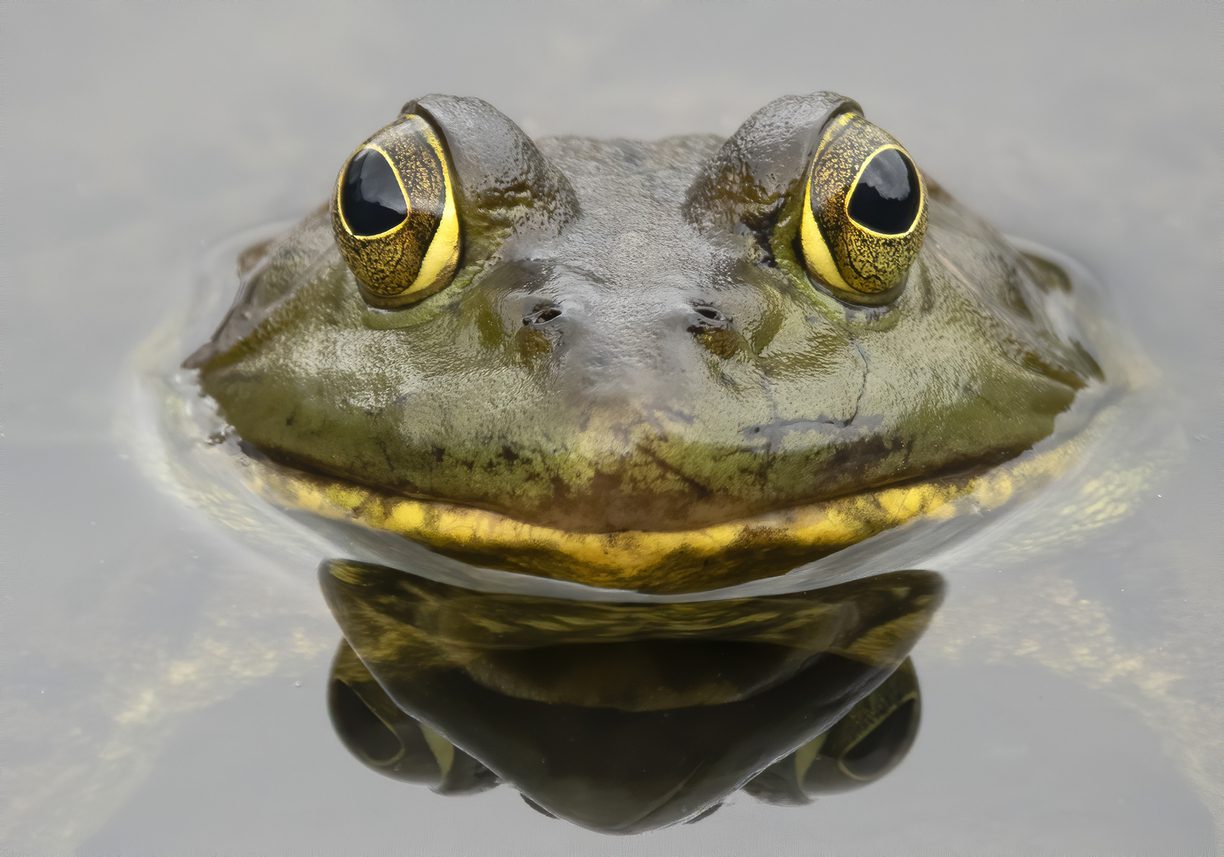Urban Extension

After passing winter at the bottom of ponds and lakes or nestled down into leaf litter on forest floors, it’s no wonder that nature’s frogs are ready to serenade us into spring. Emerging just as rain and melting snow create pools that will lodge their eggs and tadpoles during development, male frogs of many species start to coo females into producing a new generation of baby frogs.
These harbingers of spring are popular subjects in mythology and folklore around the world. Frogs are celebrated as symbols of transition, a leap from one place, thing, or situation to another. They are representatives of fertility, prosperity, purity, and good luck. And of course, ladies have to “kiss” a lot of frogs to find their princes. Unfortunately, frog populations are declining worldwide at unprecedented rates.
Threatened by disease, habitat loss, invasive species, pollution, and climate change, frog conservation groups like Savethefrogs report that up to 200 species of frogs have completely disappeared since 1980. These cold-blooded amphibians with their protruding eyes, webbed hind feet, and moist skin have inhabited Earth for as long as humans, yet man’s population continues to increase while frog populations decrease.
Why Frogs are Worth Saving
Within the diverse ecosystems on Earth, every animal and creature has a crucial role to play in maintaining ecological balance. Frogs may seem like a minute part of this equation, but their importance is far greater than many believe. Their existence and continuation assist global biological fitness and stability in numerous ways.
Frogs are an integral part of the food chain.
Throughout their lifecycles, frogs occupy a vital position in the food chain as both predators and prey. As tadpoles, they consume algae, regulating blooms. Frogs are an important source of food for a variety of organisms, including birds, fish, and snakes. Loss of frogs may lead to a fundamental breakdown in a food web with cascading effects throughout an entire ecosystem.
Frogs are important in research.
Roughly 10 percent of Nobel prizes in physiology and medicine are a result of investigations utilizing frogs. Skin secretions of frogs have the potential to significantly improve human health through their use as pharmaceuticals. For example, the painkiller Epibatidine is 200 times more potent than morphine and is synthesized from various species of poison dart frogs. Frog toxins vary, which explains why they are studied for their medicinal properties and potential contributions to therapeutic drugs.
Frogs keep insect populations under control.
Frogs are biological control agents as they eat billions of insects each year. Most frogs eat a carnivorous diet consisting of locally available insects and mollusks, including crickets, dragonflies, flies, grasshoppers, larvae, mosquitoes, slugs, spiders, snails, termites, and worms. This reduces the need for harmful pesticides that could cause harm to many living organisms.
Frogs are bioindicators.
The most important contribution frogs make is their role as an early warning for endangered ecosystems. Due to their intricate life cycle and moist, permeable skin that can easily absorb bacteria, chemicals, and other contaminants, frogs are subjected to both land and water pollution. These traits make them susceptible to changes in the environment. Since they never journey far, remaining in relatively confined regions throughout their lifespan, frogs are good indicators of local and global environmental conditions. When pollution or other environmental changes affect a habitat, frogs are often the first causalities.
Be a Frog Fan
You can become a frog fan by learning more about them. For example, during National Frog Month in April, take the time to learn more about these croaking, jumping amphibians and their importance to ecosystems. Here are other ways to become a frog fan.
Participate in FrogWatch. A nationwide volunteer frog monitoring program, FrogWatch helps citizen scientists of all ages to understand the significance of frogs as an indicator of environmental health. Participants are trained to identify frog calls, collecting, recording, and submitting their findings for scientists to study.
Create a frog-friendly backyard. Make a small shallow pond in a partly shaded area. Utilize thick ground cover plants around portions of the pond to provide warm and cool areas of water. Make sure your pond has sunlight. This encourages algae and other plants to grow, providing food for tadpoles. Ensure the banks of your pond slope gently. This way frogs can get out. Adding rocks and logs provides shelter for adult frogs.
Learn something you didn’t know about frogs. For example:
- There are approximately 6,000 species of frogs worldwide.
- You cannot get warts from touching a frog. That is just a myth.
- According to scientists, frogs were the first land animals with vocal cords.
- Frogs completely shed their skin about once a week and eat the dead skin after shedding.
- When a frog swallows its prey, it blinks, which pushes its eyeballs down on top of the mouth to help push the food down its throat.
Visit a local zoo, an amphibian society, or a museum of natural history. These facilities specialize in presenting collections of frog specimens and in educating people.
Visit www.aces.edu to find more information about frogs.

